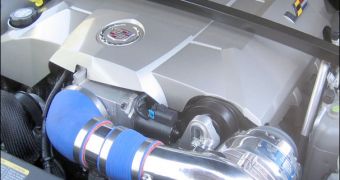Since the invention of the internal combustion engine, automotive engineers, speed junkies and racecar designers have been searching for ways to boost its power.
One way to add power is to build a bigger engine. But bigger engines, which weigh more and cost more to build and maintain, are not always better.
Another way to get more power from a normal-sized engine is to make it more efficient. You can very well do this by forcing more air into the combustion chamber. More air lets you add more fuel, and more fuel equals a bigger explosion and greater horsepower. Adding a supercharger is a great way to achieve the forced induction of air. A mechanical supercharger, or compressor, is essentially a large pump that compresses air and forces it into the engine's air intake, powered by the engine's spinning crankshaft, normally through the accessory belt.
Turbochargers do the same thing, only they are run by exiting exhaust gases.
Originally built for World War II aircrafts, superchargers have become very common in today's performance automotive world, and featured as standard equipment on some new sports cars straight from the factory.
Supercharging an engine often results in huge power increases, in the range of 50% to 100% and even more with some heavily upgraded performance kits that can bring for instance a Ford Sierra or a Morris Mini up to 800 bhp!
The only trick would be to make the bodywork withstand the huge torque and traction forces that result from the modifications.
Most of the superchargers produced today are centrifugal-style, which are internal-compression superchargers, meaning they create the boost inside the head unit (blower) before discharging it into the engine's air intake.
They have dethroned the old external compression superchargers by being more reliable, especially at higher boost levels, and are capable of creating much more boost while creating a much cooler intake charge (which results in an even denser intake charge)
The biggest disadvantage of superchargers is also their defining characteristic: because the crankshaft drives them, they must steal some of the engine's horsepower. A supercharger can consume as much as 20 percent of an engine's total power output, but it overcompensates in power output percentage.
Except for using NOS (Nitrous oxide - N2O) that itself is not flammable, but delivers more oxygen by breaking down at high temperatures, that can instantly increase the engine power by 100 bhp in 1 second, superchargers are still the most cost-effective way to increase horsepower, with most necessary parts being available on the market at reasonable prices (you can install a supercharger with $1500-$4000 on most factory cars) and an increasing number of machine shops that are qualified to perform such an operation.

 14 DAY TRIAL //
14 DAY TRIAL //